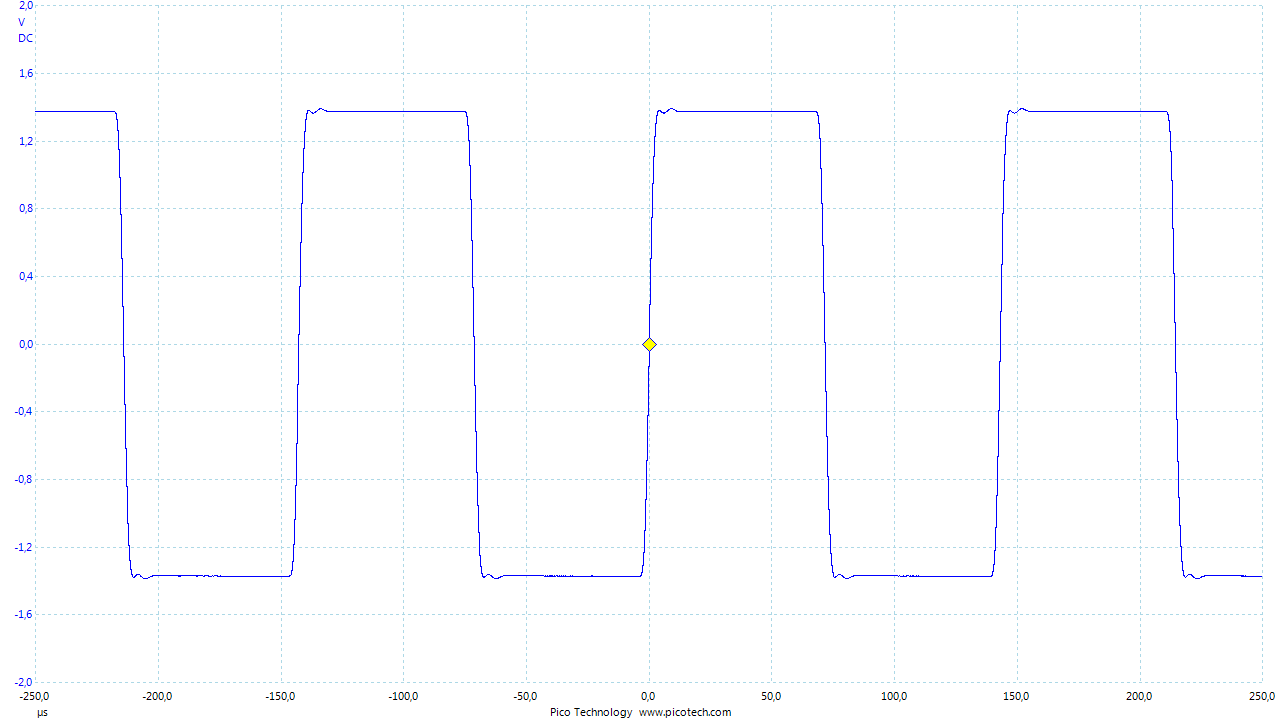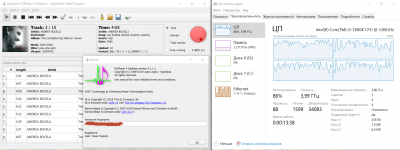my bad... i have i7 7700k.At this thread:
HQPlayer version 4 requirements - Software - Audiophile Style
It is suggested that the !7-9700K is perfectly suited to HQPlayer 4 with EC modulators, with no overclocking for DSD 256. Note that the most recent update to HQP 4 did reduce the resources required to run it.
i was looking at the new 9700 and that sticked in the post
Yeah...
That makes sense! Good to keep the info here as accurate as possible as this stuff gets kind of complex, at least for me!
my bad... i have i7 7700k.
i was looking at the new 9700 and that sticked in the post
That makes sense! Good to keep the info here as accurate as possible as this stuff gets kind of complex, at least for me!
No one has yet messed with amd ryzen platform ?
AMD Ryzen 3700x has 8 core and computer quite fast.
and is cheaper than an i7
AMD Ryzen 3700x has 8 core and computer quite fast.
and is cheaper than an i7
Domenico from Amanero uses Amd Ryzen 1700 Ubuntu Live CD + HQPlayer output SDM / 48Kx512
wish to know what modulators+algorithm he choose.
anyway i think the new ryzen 7 is a very strong and cheap platform to support hqplayer.
wish to know what modulators+algorithm he choose.
anyway i think the new ryzen 7 is a very strong and cheap platform to support hqplayer.
This page has a few posts about AMD processors
HQ Player - Page 644 - Software - Audiophile Style
There is a guy running a 3700x, but he had to do some tweaks to get it working. There are very few people running AMD's with hqp4, and it seems you have to go to the really high end AMD's to get enough performance for the ec mods.
There are a lot more people running intel at DSD256 with hqp4 and ec modulators. An i7-9700k will do it without overclocking
or tweaking pc or hqp4, as barrows said.
So safer route is Intel, and based on US pricing, AMD only saves around 10% for 3700x vs 9700k.
Last edited:
With Daphile I get DSD256 using i7-8550U. HQPlayer is lighter than Daphile.
hqp4 with the new ec modulators are VERY processor intensive. PCs that could do dsd512 with hqp3 can't do hqp4 at dsd256 ec
signalyst actually recommends the latest i9
Hi all
Sorry if this has been covered before, but I have read through most of the pages, and not found the answer.
This Chinese board:
Mshow Differential DSC1 DAC decoder DSD Assembled Compatible w/ Amanero or XU208 | eBay
Is it without modification, free from the irritating noise that NON- differential boards have, as described in this thread.
Looks like it is differential as it has the same number of shift-registers as this:
Signalyst DSC1
post 550.
If it needs modding- how to do that?
Sorry if this has been covered before, but I have read through most of the pages, and not found the answer.
This Chinese board:
Mshow Differential DSC1 DAC decoder DSD Assembled Compatible w/ Amanero or XU208 | eBay
Is it without modification, free from the irritating noise that NON- differential boards have, as described in this thread.
Looks like it is differential as it has the same number of shift-registers as this:
Signalyst DSC1
post 550.
If it needs modding- how to do that?
wish to know what modulators+algorithm he choose.
anyway i think the new ryzen 7 is a very strong and cheap platform to support hqplayer.
Don't forget that with a suitable Nvidia graphics card you can supplement the CPU with CUDA processing. I use one, nothing extremely exotic, and it made a worthwhile difference. I run AudioLinux too, seems better than Windows and it's 'dashboard' shows the graphics card processors sharing a good part of the load.
Gamers seem to constantly upgrade their video cards to the 'latest and greatest' so if you're lucky you can pick up a bargain used one, which is what I did.
I plan to switch to HQP4 soon so it'll be interesting to see how that goes.
Again, there is very good thread over at Audiophile Style that discusses exactly what is needed to run HQP4 with the EC modulators. Those there have found that the I7-9700K is entirely capable of running the EC modulators at DSD256 output. It will do this on its own (no CUDA) as long as one stays away from the more intensive filters. So, for example, Jussi's recommended filter poly-sink-ext2 runs fine at DSD 256, with the EC modulators. This is with standard implementation, no over-clocking, etc.
Note that the EC modulators require fast processor speed, rather than more cores, and do not benefit from CUDA. But if you want to run more intensive filters than poly-since-ext2, then you would probably want to add the graphics card for CUDA off load.
Of course this means the I9-9900K should be fine as well for more money!
Note that the EC modulators require fast processor speed, rather than more cores, and do not benefit from CUDA. But if you want to run more intensive filters than poly-since-ext2, then you would probably want to add the graphics card for CUDA off load.
Of course this means the I9-9900K should be fine as well for more money!
No need to use top-end i9 processors.
I5-7600K works fine for me without CUDA for ASDM7EC/poly-sinc-ext2/DSD256
I5-7600K works fine for me without CUDA for ASDM7EC/poly-sinc-ext2/DSD256
Attachments
Last edited:
Is it without modification, free from the irritating noise that NON- differential boards have, as described in this thread.
Hmmh, my original non-differential implementation doesn't have any irritating noises? If there are such, it is about something else than just differential vs non-differential.
look at post 518 and 519. This is my concern.Hmmh, my original non-differential implementation doesn't have any irritating noises? If there are such, it is about something else than just differential vs non-differential.
look at post 518 and 519. This is my concern.
I cannot comment on other implementations than what I have. But the ones I've built with the PCBs and the fixes I've posted don't have such issues. So it is something else than differential vs non-differential.
I chose to use bus termination resistor arrays because those are designed for exactly type of signal used here and accuracy is unimportant unless grossly off. I designed the 4th order analog post-filter to have minimum amount of overshoot on square waves. So 7 kHz square wave looks pretty decent compared to many typical DACs that you can commonly find on the market:

Which was one of my goals.
Last edited:
Could you show exactly, how you implemented your DSC1? With schematics and parts used?I cannot comment on other implementations than what I have. But the ones I've built with the PCBs and the fixes I've posted don't have such issues. So it is something else than differential vs non-differential.
I chose to use bus termination resistor arrays because those are designed for exactly type of signal used here and accuracy is unimportant unless grossly off. I designed the 4th order analog post-filter to have minimum amount of overshoot on square waves. So 7 kHz square wave looks pretty decent compared to many typical DACs that you can commonly find on the market:

Which was one of my goals.
Still it does not answer my question regarding the Chineese DSC1. Has anybody tried it and is it noise free?
Could you show exactly, how you implemented your DSC1? With schematics and parts used?
Of course, because that's how the DSC1 started. The original documentation is available here:
Signalyst
I posted the fixes I've made to the original version early in this thread. Most notably ground planes need to be connected very carefully at precise point where D/A section connects to the I/V.
P.S. Main mistake in my original design was to use dual op-amps. I should have used single ones... 🙁
Last edited:
Of course, because that's how the DSC1 started. The original documentation is available here:
Signalyst
I posted the fixes I've made to the original version early in this thread. Most notably ground planes need to be connected very carefully at precise point where D/A section connects to the I/V.
P.S. Main mistake in my original design was to use dual op-amps. I should have used single ones... 🙁
Sorry!
Of course.🙄
I didn´t realize who was posting!
- Home
- Source & Line
- Digital Line Level
- Signalyst DSC1
